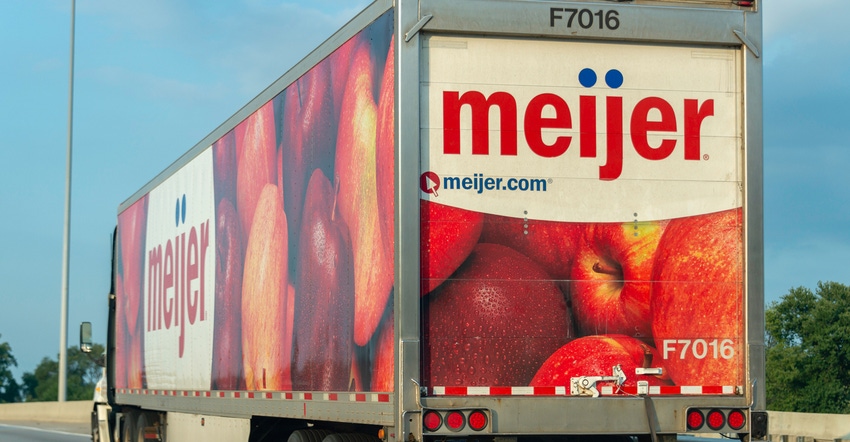March 26, 2020

Under Gov. Gretchen Whitmer’s "Stay Home, Stay Safe" Executive Order (EO 2020-21), directing all Michigan businesses and operations to temporarily suspend in-person operations that are not necessary to sustain or protect life, Michigan’s food and agriculture industries and related workers will be considered as “essential critical infrastructure” to ensure continued food security.
The order was issued Monday, took effect on Tuesday and is scheduled to run through April 13.
Individuals may only leave their home or place of residence under very limited circumstances, and they must adhere to social distancing measures recommended by the Centers for Disease Control and Prevention (CDC) when they do so, including remaining at least 6 feet from people from outside the individual’s household to the extent feasible under the circumstances.
The essential critical infrastructure designation for agriculture closely mirrors guidelines announced by the Department of Homeland Security's Cybersecurity and Infrastructure Security Agency (CISA) on March 19 to ensure the security and resilience of critical infrastructure.
Agriculture key to Michigan consumers
Whitmer’s inclusion of critical infrastructure workers as defined by CISA, including agriculture designations, is essential to Michigan consumers, says Michigan Farm Bureau President Carl Bednarski.
“As Gov. Whitmer continues to make informed decisions to implement additional necessary steps to mitigate COVID-19 exposure for our citizens, we want to reaffirm the commitment of the food and agriculture sector to continue providing consumers a safe and reliable supply of products,” Bednarski says.
According to Bednarski, critical infrastructure for maintaining a steady food supply extends far beyond the farm level, noting it also includes those in the supply chain, food distribution centers and processors, as well as grocery and farm market retail outlets for consumers.
Equally important, Bednarski says, is the movement of input supplies to farmers as they head into spring planting.
“We are entering a decisive moment as spring arrives; any interruptions now would have long-lasting and dire consequences for the entire year and perhaps beyond,” Bednarski says. “It’s imperative that the food- and agriculture-associated industries continue operations while exhibiting an abundance of caution and adhering to CDC standards for employers and employees.”
According to Whitmer, Monday’s order was based on a growing caseload of COVID-19 patients who are already overwhelming many Michigan emergency rooms.
“In just 13 days, we’ve gone from 0 to over 1,000 COVID-19 cases,” Whitmer said in a statement when announcing the order. “This is an unprecedented crisis that requires all of us working together to protect our families and our communities. The most effective way we can slow down the virus is to stay home. I know this will be hard, but it will be temporary. If we all come together, get serious and do our part by staying home, we can stay safe and save lives.”
Whitmer added that state authorities will evaluate whether the order will need to be extended based on, among other things:
• data on COVID-19 infections and the disease’s rate of spread
• whether sufficient medical personnel, hospital beds and ventilators exist to meet anticipated medical need
• the availability of personal protective equipment for the health care workforce
• the state’s capacity to test for COVID-19 cases and isolate infected people
• economic conditions in the state
Essential critical agriculture workforce
Here is the CISA guidance on the essential critical infrastructure workforce for agriculture.
Workers supporting groceries and pharmacies. It also includes and other retail that sells food and beverage products
Restaurant carryout and quick-serve food operations. This includes carryout and delivery food employees.
Food manufacturer employees and their supplier employees. This includes those employed in food processing (packers, meat processing, cheese plants, milk plants, produce, etc.) facilities; livestock, poultry and seafood slaughter facilities; pet and animal feed processing facilities; human food facilities producing byproducts for animal food; beverage production facilities; and the production of food packaging.
Farmworkers. This category includes those employed in animal food, feed, and ingredient production, packaging and distribution; manufacturing, packaging and distribution of veterinary drugs; truck delivery and transport; farm and fishery labor needed to produce the food supply domestically.
Farmworkers and support service workers. This includes those who field crops, commodity inspection, fuel ethanol facilities, storage facilities and other agricultural inputs.
Distribution employees and firms supporting food, feed, and beverage distribution. This includes warehouse workers, vendor-managed inventory controllers and blockchain managers.
Sanitation workers. This category includes those who support the sanitation of all food manufacturing processes and operations, from wholesale to retail.
Company cafeterias. This is defined as in-plant cafeterias used to feed employees.
Food testing workers in food testing labs. The category includes those workers in private industries and in institutions of higher education.
Assistance workers. This includes those workers essential for assistance programs and government payments.
Input employees of companies in several categories. This includes those engaged in the production of chemicals, medicines, vaccines and other substances used by the food and agriculture industry, including pesticides, herbicides, fertilizers, minerals, enrichments and other agricultural production aids.
Animal agriculture workers. This includes those employed in veterinary health; manufacturing and distribution of animal medical materials, animal vaccines, animal drugs, feed ingredients, feed and bedding, etc.; transportation of live animals and animal medical materials; transportation of deceased animals for disposal; raising of animals for food; animal production operations; slaughter and packing plants and the associated regulatory and government workforce.
Forest product workers. This includes those who support the manufacture and distribution of products including, but not limited to, timber, paper and other wood products.
Maintenance employees. This includes those engaged in the manufacture and maintenance of equipment and other infrastructure necessary to agricultural production and distribution.
Source: MFB, which is solely responsible for the information provided and is wholly owned by the source. Informa Business Media and all its subsidiaries are not responsible for any of the content contained in this information asset.
You May Also Like




